2013 Volume Issue 6
April 25, 2013
For a downloadable version, click the following:
…a bit more compressed version of the PDF
Is the U.S. the ‘new emerging nation' as some analysts are saying? If so, why so?
THE SUBSTITUTION EFFECT
As we have pointed out over the last ten years in the newsletters on this website, the SUBSTITUTION EFFECT is one of the most powerful economic forces that is always at work 24 hours a day, 7 days a week, and 52 weeks a year… Its results are given other names as well: automation, factor price equalization, technological change, etc, etc, etc.
Now we are hearing the clamor from the Asian tigers no less, of the growing competitive rebound of the U.S. clawing back into the game.
Here Comes the Next Hot Emerging Market: the U.S.
Wall Street Journal
Friday, April 19, 2013
Jason Zweig
online.wsj.com/article/SB10001424127887324763404578432832232151840.html?KEYWORDS=jason+zweig
So when Mr. van Agtmael says he sees an underappreciated investment opportunity, he is worth listening to. When he visited China last year, one manufacturing executive after another complained to him about American competition, "something I had never heard in 40 years in Asia," he says.
Mr. van Agtmael points out that labor costs in China have been rising roughly 15% annually while stagnating in the U.S. Meanwhile, oceans of cheap oil and natural gas are flowing from American shale."
All of this despite the fact that over the years the U.S. of A. has accepted and even supported foreign exchange market intervention by other nations that made their currencies cheaper and the U.S. dollar more expensive, i.e., by selling their currencies and buying Dollars, they drove the foreign currency price of the U.S. Dollar above its equilibrium level. While mainland China is a more recent example of this exchange rate policy, we can go back two-thirds of a century, just after the Second World War had ended, when the IMF-Bretton Woods fixed exchange rate system came into being. Imbedded in that exchange rate structure, was the overvaluation of the U.S. Dollar in respect to currencies such as the German Mark and the Japanese Yen.
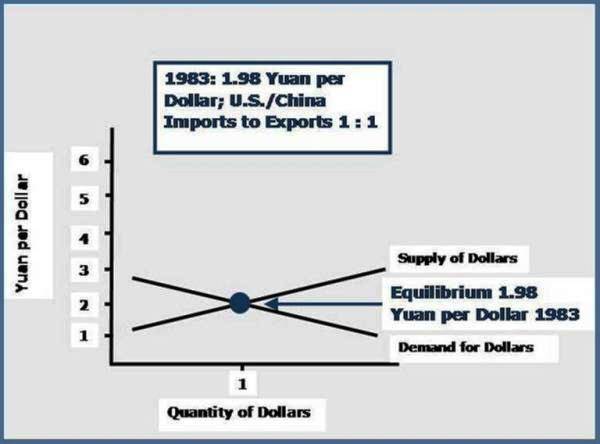
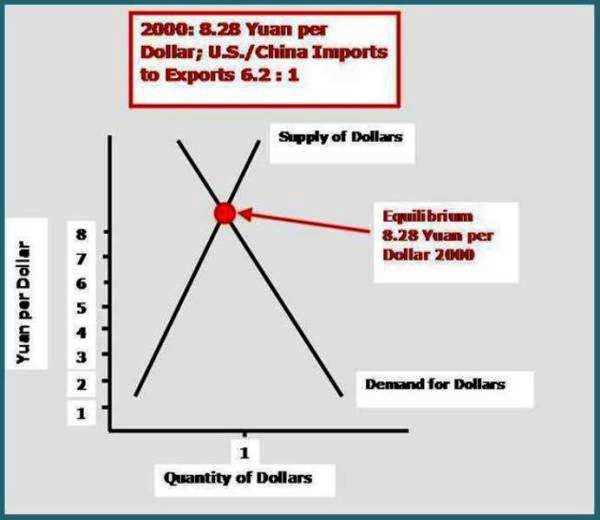
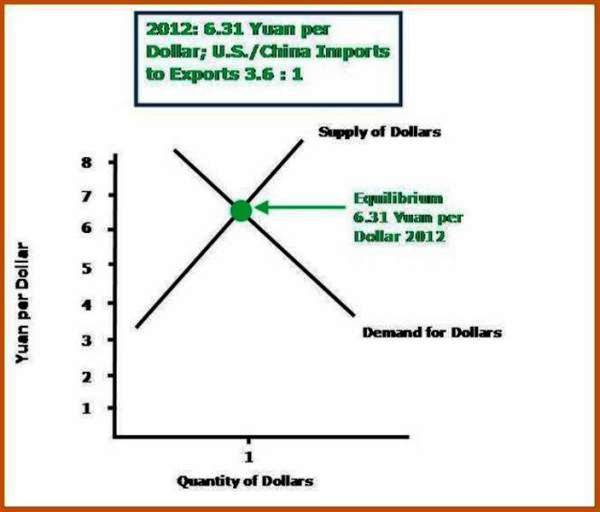
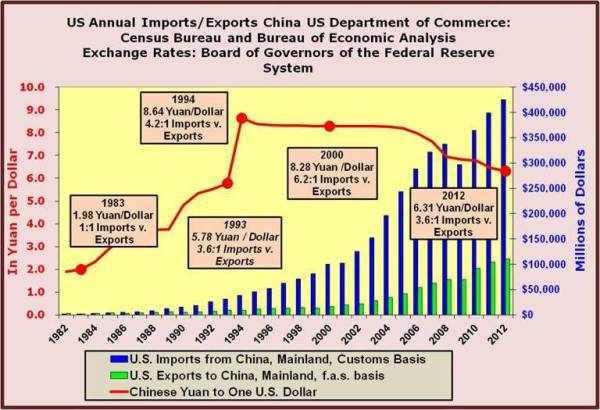
U.S. Trade Deficit: Good, Bad, or Irrelevant?
October 10, 2003
www.econnewsletteroct102003.com
Why 25+ Years of Trade Deficits? A tale of High Real Risk-adjusted Interest Rates and the Appreciating/Depreciating Dollar
Jan 12, 2011
(reposted/updated from May 1, 2009)
www.econnewsletterjan122011.com/
HERE WE GO AGAIN: The broken CD (record) routine…before it was Japan and Germany eating our lunch, now it is China
September 23, 2010
www.econnewslettersep232010.com/
U.S. Balance of Payments and the Greatest Puppet Show on Earth: China; the Oil Cartel(s); and Energy and the Environment
March 30, 2011
www.econnewslettermar302011.com/
THE CHINESE MIRACLE; OR IS IT REALLY A U.S. POLICY DEBACLE?
February 3, 2012
www.econnewsletterfeb032012.com/
Recall that in international trade and finance, each transaction has two relevant prices, the price of the products (goods and services) and real and financial investments and the price of the foreign currency. Cheapening one's currency makes the effective price of the product or the investment cheaper, all else equal.
Conversely, if a nation's currency appreciates (becomes more expensive in respect to the currencies of other nations), the products and investments that the nation experiencing appreciation of its currency in foreign exchange markets become more expensive to the rest of the world; again, all else equal.
The virtually universal law of demand tells us that as the prices of nearly all goods and services increase, the quantity demanded of those goods and services deceases and vice versa.
FACTOR PRICE EQUALIZATION AND THE SUBSTITUTION EFFECT
A major complaint of foreign firms is that in places like mainland China, compensation rates to labor have been soaring at double digit rates for several years. That is what can be expected according to the factor price equalization principle (FPE). The relative abundance of labor when trade began in earnest, gave China an advantage over many of the products made in the U.S. U.S. imports divert some the aggregate demand of the U.S. to that of China. That is why imports, of and by themselves, depress an economy. Exports have the opposite effects.
The demand for productive resources such as labor is a derived demand, that is, derived from the demand for the goods and services the productive resources help produce. As Chinese exports soared, so did the demand for productive resources such as labor. The population policy of China was also a significant factor in rising labor compensation rates. The millions of aborted babies would gradually have a significant negative impact on the size of the Chinese labor force as well as the number of consumers of Chinese production.
The major reason for U.S. firms outsourcing to less developed nations, was relatively cheap foreign labor. The rise in the derived demand for labor as exports soared and the curtailment of the labor supply eventually had the effect of increasing labor compensation rates. As labor compensation rates in the less developed nations such as China and India continues to rise, a pattern consistent with factor price equalization (FPE) slowly materializes. Production shifts gradually to the lower labor cost areas within the U.S. as well. It can be most clearly seen in the automotive industry as production has gradually shifted toward the Southeastern U.S. This was enhanced by the transplants locating primarily in the Southeastern U.S. Total labor compensation rates, especially in the non-wage component of the total compensation package, is significantly lower for the automotive industry in the S.E. United States than in the Midwest and Great Lakes Region of the U.S.
Why has [or has] the U.S. lost its competitive edge?
September 24, 2010
www.econnewslettersep242010.com/
Heritage Foundation on Big Three labor compensation Dec 2008
UAW Workers Actually Cost the Big Three Automakers $70 an Hour
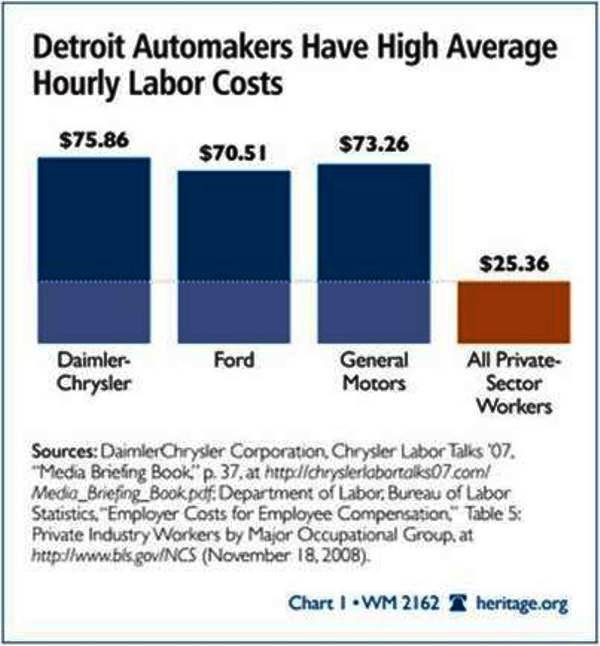
The FPE acted like a pincer mover movement. The FPE was augmented by another SUBSITITUTION EFFECT, i.e., AUTOMATION. The high labor compensation rates along with strike threats and work rules limiting productivity gains in the heavily union organized U.S. automotive industry in the Midwest and Great Lakes regions of the U.S. led to relatively high unit labor costs compared to a less labor intensive, more capital intensive method of production.
With the building of new plants and the makeover of old ones, the automotive production process became increasing capital intensive, i.e., more automated. The Henry Ford effect is part of the law of substitution and leading to increased automation.
The pressures to automate are not unique to the auto industry. Agriculture has experienced it in waves, some of which were called green revolutions and some due threats of unionization of the agricultural labor force.
The Chinese face a difficult future with lack of domestic consumption and a low to zero population growth keeping a lid on the size of the labor force.
Fed study says China's growth could slow sharply by 2030
Reuters
March 26, 2013
www.reuters.com/article/2013/03/26/us-usa-fed-china-idUSBRE92P14T20130326
"Economic growth in China faces mounting headwinds and could fade dramatically in the years ahead due to declining productivity and an aging population, according to a U.S. Federal Reserve study."
Despite the raging controversy over migration into the U.S., especially from nations to the south of us in the Western Hemisphere, this migration has certainly helped to swell the monthly population in the U.S. to levels approaching and surpassing 200,000 and ultimately causing a positive rate of growth in both the working age population (Civilian Noninstitutional Population) and in the consuming population. The real problem is that the American labor force needs a higher labor force participation rate (LFPR) to experience a much higher rate of economic growth not only in real GDP but also in job opportunities. Anti-economic growth Federal Government economic policies are the ongoing problem and not the outsourcing of jobs.
On this U.S. side of the picture, the steady decline in the unionized portion of the labor force, especially in the private sector, the result of years of automation which have led to a much more productive labor force, and the ongoing virtually non-existent recovery and growth, have made the U.S. economy an increasingly competitive environment.
As we move more quickly toward energy independence from the rapid growth of fracking for both gas and oil from the shale fields and now the apparent breakthrough of fracking to increase the geothermal source of energy, our relative degree of competitiveness seems ready to make a breakout. The only missing ingredient is a cohesive pro-growth policy from the Beltway.


